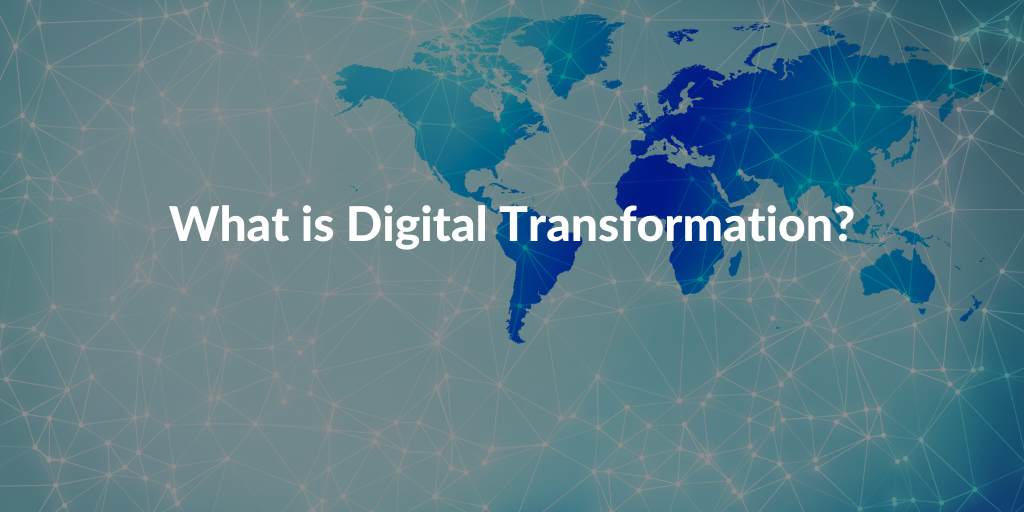Categories
Tags
Newsletter
Subscribe to the QRP International neswletter and get all the news on trends, useful contents and invitations to our upcoming events
Subscribe
Common drivers of Digital Transformation include reducing costs, improving productivity and providing a better customer experience. However, by far the biggest motivation for this change in the way companies operate is the need to survive.
There is no unambiguous and official definition of Digital Transformation, but several organisations have given more or less specific definitions. In general, the question “What is Digital Transformation?” was answered by the Hewlett Packard enterprise with this definition, now broadly taken as a standard:
Digital Transformation is the process of completely replacing manual business processes with the latest and most up-to-date digital alternatives. This type of innovation involves all aspects of a company, not just technology.
Digital Transformation is crucial for the survival and growth of all businesses, but every business has different needs and transformation goals.
Here are some of the many motivations for businesses to embark on a Digital Transformation journey:
The main objective that all companies have in common is on the one hand to survive but above all to create value. This can be achieved in different ways: by improving business processes, customer experience or cost-effectiveness.
Let’s look into what the major advantages and benefits of Digital Transformation are within a company.
What are the Benefits and Advantages of Digital Transformation?
According to 2,000 executives surveyed by Cognizant.com, Digital Transformation triggers:
What are the Challenges of Digital Transformation?
Advantages and benefits of Digital Transformation far outweigh hypothetical risks, most of which are associated with shortcomings in the Digital Transformation itself or with mismanagement. If any of these hypothetical consequences occur, they can be costly or even fatal:
Moreover, a badly organized or superficial Digital Transformation will probably not yield good results. Unfortunately, some companies invest large sums in something that is not monitored, structured, adopted by stakeholders and, as a result, does not generate any value.
Although the Digital Transformation has already started a few years ago, many organisations have not yet ‘made the leap’ or are not using the available transformation tools.
Companies, due to a lack of internal resources, budget or fear of change, are afraid of Digital Transformation and ‘dependence’ on new technologies. However, using innovative and efficient tools can offer many advantages:
There are different types of tools that can revolutionise a company’s working methods. These tools are investments that, in the medium and long term, facilitate the work of employees and give them an advantage over the competition.
Among the tools are:
Which methodologies are most suitable for undertaking a Digital Transformation? Let’s look at the most suitable ones according to the operational level:
| Action Item | Method | Description |
|---|---|---|
| Enterprise Governance | COBIT | Framework for Corporate Governance and IT Management, which supports the realisation of business objectives. |
| Enterprise Architecture | TOGAF | Proven Enterprise Architecture Framework used by leading global organisations to improve business efficiency. |
| IT Service Management | ITIL | Comprehensive, practical and proven guide to implementing a Service Management System. |
| Project Management | PMP/CAPM | Proven and practical body of knowledge for developing Project Management skills. |
| PRINCE2 | Traditional Project Management method that is structured and pragmatic. | |
| AGILEPM | Innovative approach to Project Management according to Agile principles. | |
| PM2 | Project Management methodology developed and supported by the European Commission. | |
| SAFe | Agile management method at enterprise level. | |
| Programme/ Portfolio Management
PMO |
MSP | Programme Management Best Practice Reference Framework. |
| MOP | Guide providing a set of principles, techniques and practices to introduce or revitalise Portfolio Management. | |
| P3O | PMO (Project Management Office) management guide to establish, develop and maintain PMOs. | |
| Change Management | Prosci | A globally recognised, results-oriented approach to managing change. |
| Change Management | Structured approach to help individuals and teams move from the current to the future state. | |
| Agile Change Management | A practical guide for planning and implementing changes, using the Agile principles of incremental and iterative delivery. | |
| Quality Management | Lean six sigma | Quality Management method based on improving performance by systematically eliminating waste, downtime and waste by improving quality and standardisation. |
| Solution Development | Scrum | Agile framework for the development, delivery and maintenance of complex products through effective team collaboration. |
| DevOps | Cultural and professional movement that focuses on communication, collaboration and integration between software developers and professionals in IT Operation. | |
| Design Thinking | Creative method for learning and solving complex problems in an empathetic and collaborative manner. More than a method, it is a ‘way of thinking’ using designers’ sensitivities and ways of conception. |
Here are some tips for a successful Digital Transformation within your organisation:
Although Digital Transformation is often managed by the company’s employees themselves, certain roles within the company play a key role in the success of this process:
There can be no real ‘end’ to the Digital Transformation, which is why the very term ‘Digital Transformation’ may not fit. In reality, it is an endless journey, a continuous and necessary improvement of processes. It all depends on progress, available technologies and innovations.
Digital Transformation is now almost an ‘obligatory’ step for most companies and business models. However, it is also an opportunity that can enable companies to improve their performance, return on investment (ROI) and customer satisfaction.
Would you like to learn more about Digital Transformation Methodologies? QRP International offers training and certification in the areas of Project Management, Programme Management, Portfolio Management, PMO, but also Agility, Change Management and IT Service Management. Have a look at our virtual courses or our on-site classroom training.
For any questions, please don’t hesitate to write to us!